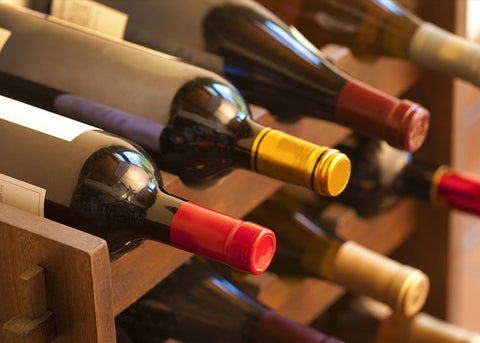Your Cart is Empty

One wine is red, the other is white. Okay, this basic guide to red and white wine won’t be quite THAT basic. There’s no competition when it comes to red and white wines. They’re THE wines. If you ever go to a restaurant, or a dinner party, or a fine dining event, the server distributing the wine will inevitably ask: red or white?
Unless you’re a wine connoisseur, or a wine enthusiast, you’re not going to be familiar with the specific brands, where the wine is made, or what differences those make, but it’s nice to know, broadly, the differences between the two. My dad is more of a beer fan. He drinks wine, on occasion, during celebrations, fancy dinner parties, etc. But he’s never taken the time to understand even the basics of wine. The question “red or white?” is almost a rhetorical one; he’ll often choose at random. I’m offering a very basic guide to red and white wines. For all the people who want to find the wine for dads but are unsure of the exact differences between the two; for all the dads who unconfidently answered the old “red or white?” question, I offer you a basic guide to red and white wine.

Conception
The beginning of a guide to red and white wine should start at the beginning of the wines themselves. Wines are crafted through grapes. The type of grape heavily influences the wine you’ll end up with. Dark grapes are used for red wines and lighter toned grapes (and the juices from dark grapes) are used in white wines. After the grapes are crushed, fermentation begins, turning the frothy juice after the crushing into wine. Once the fermentation process is done and the wine is created, the process of aging begins. Aging is sporadic and varies from wine to wine, place to place. The place a wine is made and the time in which it’s aged create the massive glossary of wines that make it difficult for newcomers to navigate. There is no specific wine for dads, but it doesn’t hurt to know that this difficult navigation can be simplified by starting with the basics and looking for the easiest and simplest wines.
Red or White?
The biggest difference between the two wines stems from the grapes. They’re the foundation of any wine and the selection of grape has significant effects on the wine it’ll help produce. Red wines use whole dark grapes, while whites wines use whole light grapes and the juices of dark grapes. Red wines have powerful tastes. They’re bold like perfumes. White wines are often lighter with less prominent tastes, but they can also be fruity. Red wines can be served at room temperature while white wines often need to be chilled before serving. Everyone has a preference and finding the right wine for dads will eventually boil down to their preference between the two.
Venturing into the Complicated, the Simple Way
If you’re a newcomer to wines, it’s best to stick to the basics and find some of the more common or popular wines to begin with. Seeking out popular wines is a great starting point for finding the wine that’s right for you. Start with red or white, then venture into the more specific categories after that. Red wines like Merlot and Gamay offer a fruit-centric flavour, while a Pinot Noir can be a bit lighter and less bold. White wines like Pinot Blanc and Verdejo offer a light and clean drink, while a Chardonnay can be dry with an exciting taste. Once you’ve chosen a favourite type or two, you can start seeking out the best brands that fit your taste preference, and you’re on your way. Ultimately, a guide to red and white wines can only help you so much. A guide can steer you in the right direction but you’ll only know what you prefer once you try it.
In time, you’ll develop your own acquired tastes and preferences. I hope anyone who was unsure found this guide to red and white wine helpful. My hope was to instill enough information on the subject of red and white wine for this Father’s Day. Finding a wine for dads is like finding a wine for anyone. It takes time, and experience, and trial and error. Start with the common ones and navigate further after that. Whether it’s for you, or your loved one, or your dad, when that “red or white?” question inevitably surfaces again, you’ll have a somewhat clear answer for that server who’s been patiently waiting this whole time.